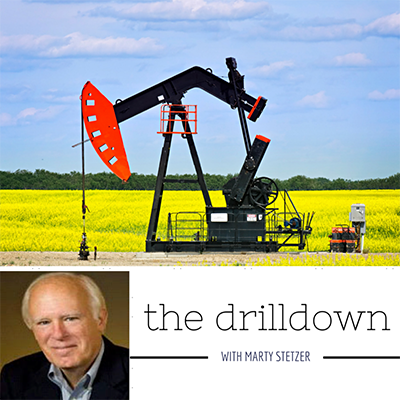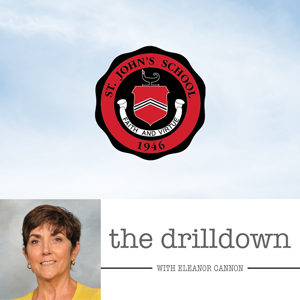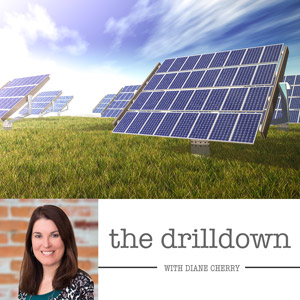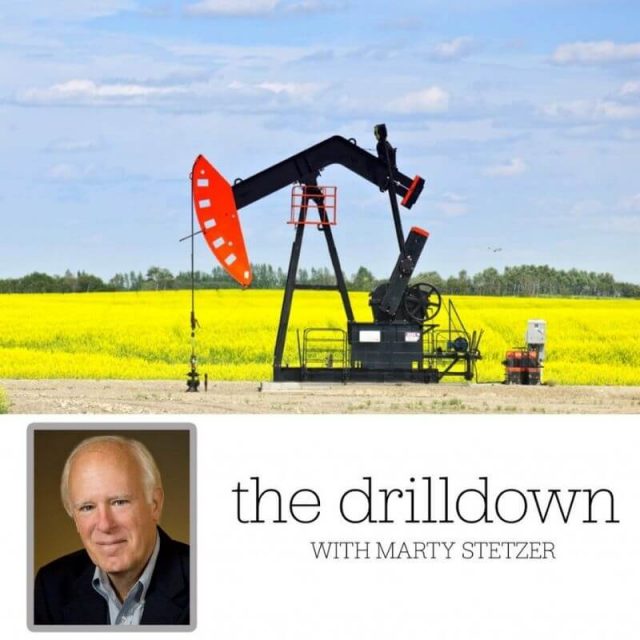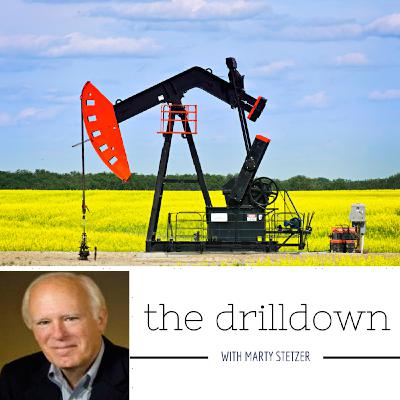The Digital Oilfield with Tony Edwards of Stepchange Global
Description
Thanks for listening to the EKT Interactive Oil and Gas Podcast Network.
In this episode, we welcome Tony Edwards to the podcast. Join us for this discussion on the digital oilfield, part of our Digital Oilfield podcast series.
Remember, our listeners get $400 off the registration price (use code EKT400) to the Upstream Intelligence Data Driven Production Conference. It’s happening in Houston on July 6-7.
About Tony Edwards
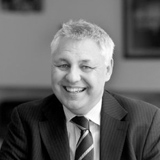 Tony is a recognized expert in the application of Digital Oilfield Technologies in the oil and gas industry.
Tony is a recognized expert in the application of Digital Oilfield Technologies in the oil and gas industry.
He has more than 20 years’ experience in the oil and gas industry, in leading companies such as BP and BG.
His core discipline is in operations management, including 5 years offshore and 3 years as Operations Manager on major Oil and Gas projects.
In this episode of Drill Down, we discuss Tony’s background in the digital oilfield and current trends and opportunities in this growing space.
Relevant Links:
Digital Oilfield Podcast Series:
We put together this series of podcasts in conjunction with Upstream Intelligence to bring our listeners up to speed with the latest trends influencing the digital oilfield.
Upstream Intelligence Data Driven Production Conference with Louis Vye
The Digital Oilfield with Tony Edwards of Stepchange Global
Innovations in the Digital Oilfield with Joe Perino
Data Driven Production with Jim Crompton
Timestamps:
[1:00 ] Tony Edwards’ background – The field of the future
[2:45 ] Mining vs Upstream – comparison and commonalities
[3:45 ] What sparked an interest in the digital oilfield
[7:00 ] Breaking down silos – colocating multi-disciplinary teams
[9:10 ] Integrating teams and technology – impact on production platforms
[12:30 ] Onshore & Shale Digital Oilfield – from the low cost ecosystem model to a low cost / smart hybrid
[16:00 ] Last thoughts – Opportunity in greed-field operations to drop cost and CAPEX through digital oilfield implementations
Transcript:
Hi everyone. Welcome to the Drill Down with Marty Stetzer. This podcast is part of our EKTI, oil and gas learning network, and brought to you jointly today with Upstream Intelligence in the UK.
Upstream Intelligence is the foremost provider of business intelligence and analysis for the upstream oil and gas community. They’re devoted to providing unique industry insight to drive efficiencies, reduce cost, and maximize production capabilities.
Today our topic is data driven production. With an estimated global value of 31 billion dollars by 2020, the digital oilfield is the oil and gas industry’s hotbed of innovation, including big data analytics in the industrial internet of things, or IOT.
Today I’ll be speaking with Tony Edwards, an industry veteran. This is our first podcast with Tony, an expert in this field. We are really happy to have his input on this new and important part of the upstream business.
Tony, welcome.
Thanks Marty. It’s great to be here.
As we start, can you give our listeners your background?
Yes. I joined BP as a young graduate in the late 1980’s and progressed on a pretty general career in oil and gas, mainly in petroleum and production engineering, some time in RND. Then I really ended up in operations management, and ended up working in North Sea, Southern North Sea, and as offshore as an OIM, and as an operations manager in Baku.
Then my career took a bit of a shift and in 2003 I was asked to join a new program that was called field of the future, which was BP’s version of digital oilfield, and so I was part of the original team that set up the entire concept inside BP on how we were going to use real time data and information to make forms improvement inside our upstream operations.
From there I moved to BG Group in 2006 and set up there a digital oilfield program from scratch, and I did that for three to four years.
Then in 2009 I joined Stepchange Global and decided to do this on the outside in a consultancy firm, and we’ve been advising oil and gas companies and indeed mining companies on how to implement digital oilfield and integrated operations around the globe.
Tony, that’s interesting. I didn’t realize in addition to the upstream side of the business, the mining folks are interested. Can you elaborate on that a little bit?
Yeah, we’ve seen that there’s an awful lot in common in oil and gas and mining in general. They’re both extractive industries, they’ve both got extended value chains in many cases, you know not kind of, an upstream or mine piece, some sort of delivery system, pipelines or rail, and then some sort of export business. If you look at it, their model is actually pretty close to some of our core operations like LNG.
They’ve also got a lot in similar in the fact that they often have siloed organization. They have all the same sort of organizational people challenges of getting people to do things a different way, so we find that a lot of what we learned in oil and gas is ported over pretty easily into mining sector.
We’ve done work with mining companies on iron ore mines in Australia, copper mines in Chile, and more recently on a brand new potash mine in Canada.
Tony again, thanks for being part of this effort. You mentioned earlier and I understand your primary focus is the organizational impact of some of these new technologies. What in your career or in your consulting side kind of sparked your interest in this piece of the puzzle?
Well I think if we dial back to the early days of digital oilfield and integrated operations when many of the big companies were kicking off with concept . There was BP, Shell, Statoil, Conoco in Norway, and in the national oil companies in particular, Saudi Aramco.
We were all trying to understand what the dimensions were of this big new thing, where we can have real time data and information coming off of our assets, coming off our platforms, and it being available for use in the office, and available to experts in the office, and what were we going to do with it?
Of course the initial focus was very much around, “We need to get the data.” So, how do we capture the data, how do we store the data, how do we transmit the data. Of course one of the big breakthroughs was the advent of high bandwidth communications, particularly in areas like the North Sea where fiber was laid very early on.
So we could get that data, but then it was very much about, what do we do with the data? Initially the push was to get these IT data and information systems in place, and then we went through a phase of building rooms, collaborative rooms.
We worked out pretty quickly that you needed teams to look at the data, or analyze the data, and look at opportunities in that data, and then convey those to the guys in the field who were going to do something different.
Early on the focus was on the technology in the rooms, and we very quickly worked out that if you took the, “If we build it, they will come,” approach, they basically did.
We then switched this around to thinking about it as technology-enabled transformation, and how do you change the … How do you get the people on board. Literally say, a technician or an operator offshore or onshore he’s been doing something the same for 20 years, how do you get them to do something different? Because now we’ve got data and information which can inform where they need to be at any one time.
We needed to look at the processes, so when you look at process work flow, they were generally geographically constrained around a platform or a site. Now we’re saying actually we can have people looking at the data, and the process could be done remote. So how does that change?
Then also the organizational alignment, how do we organize ourselves to take value from having this data and information? We quickly understood that just having the data and information was just not good enough. We needed to think of it in much broader terms, and certainly companies like BP, and Statoil, and others started thinking about this is a transformation program, or continuous program rather than a technology program.
Tony, you mentioned earlier the challenge of the silos, which in our consulting and in our training programs we’re still seeing. Was there any way that this helped break down some of the silos by having disciplines, look at proble

